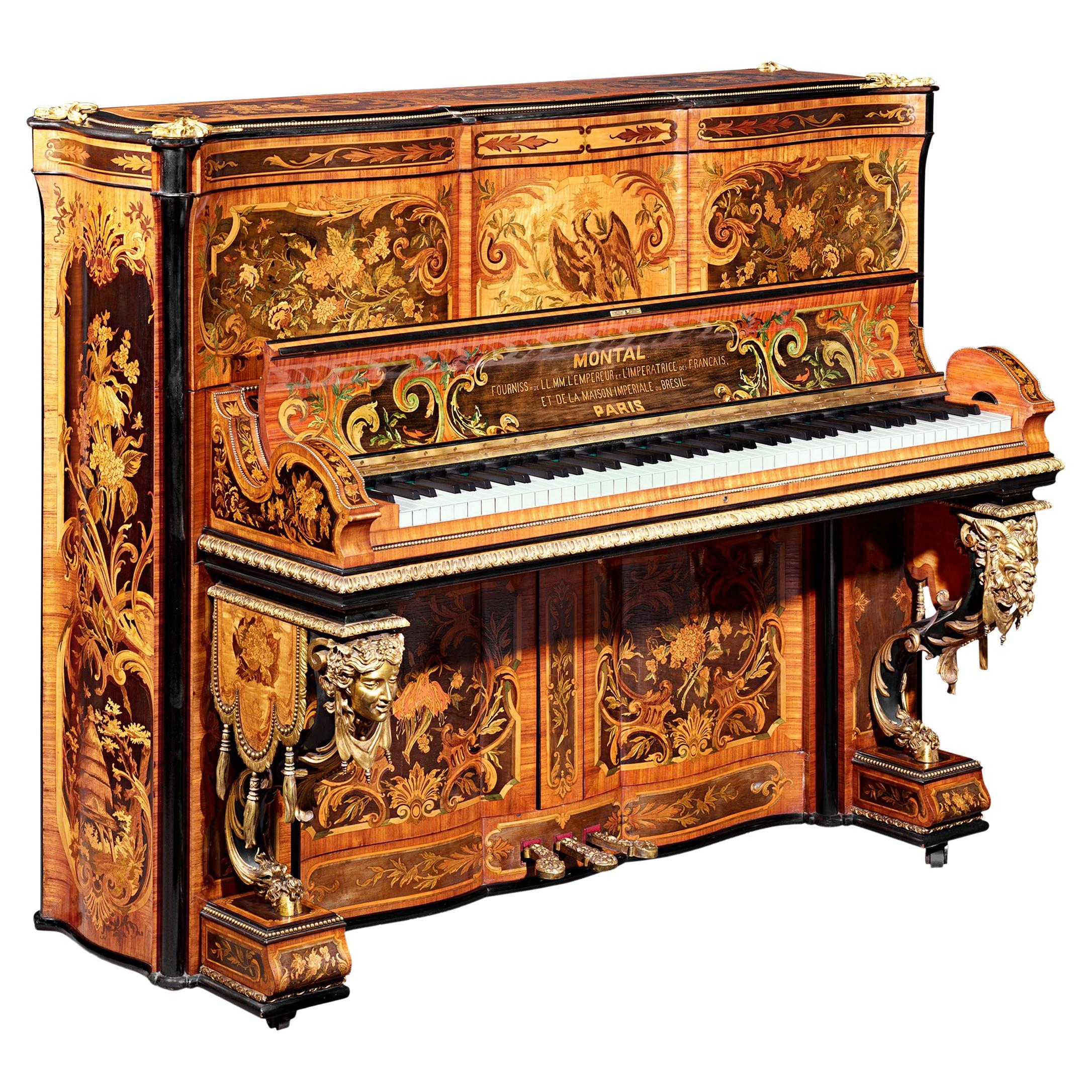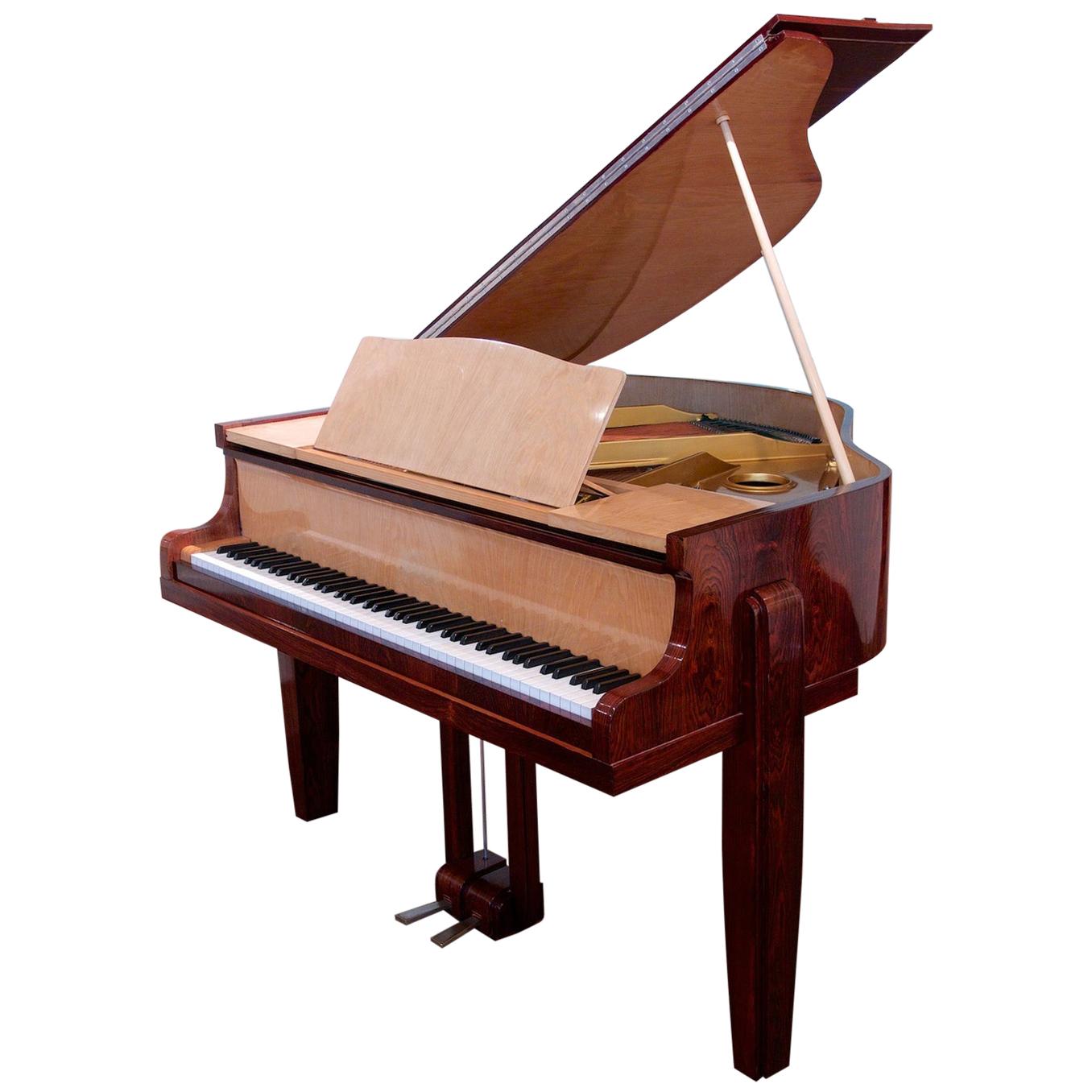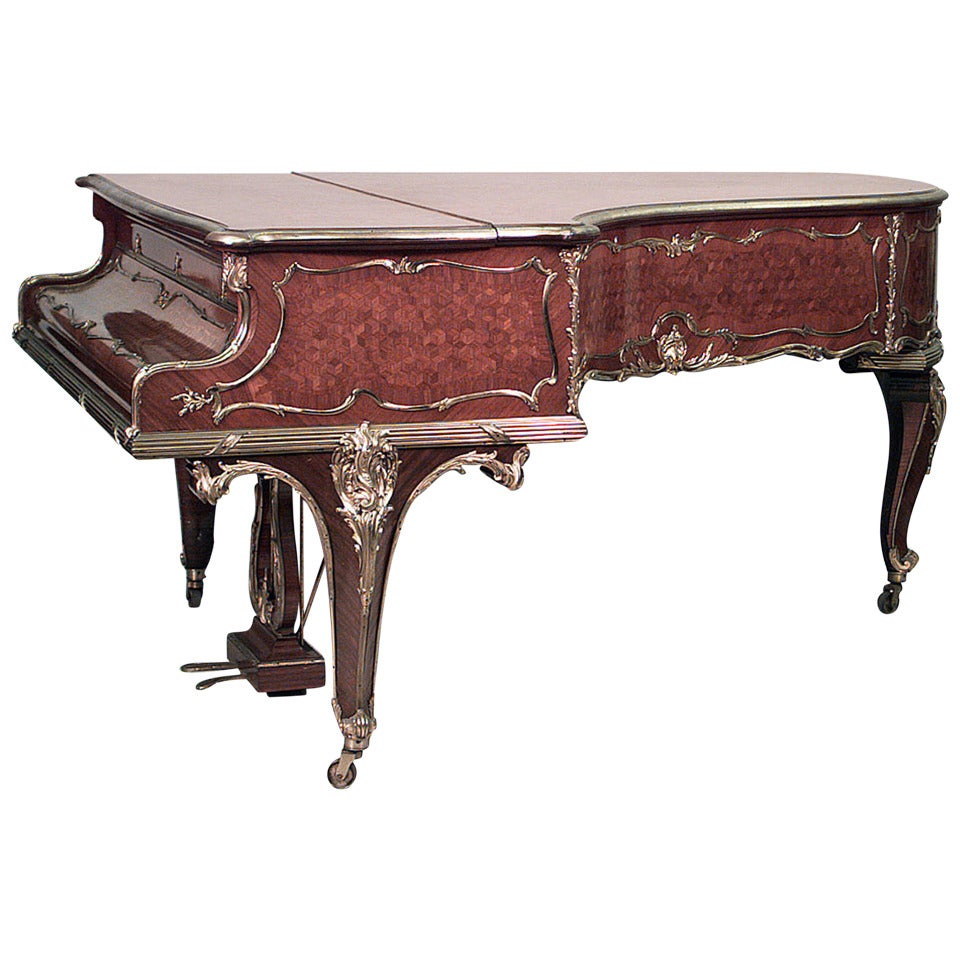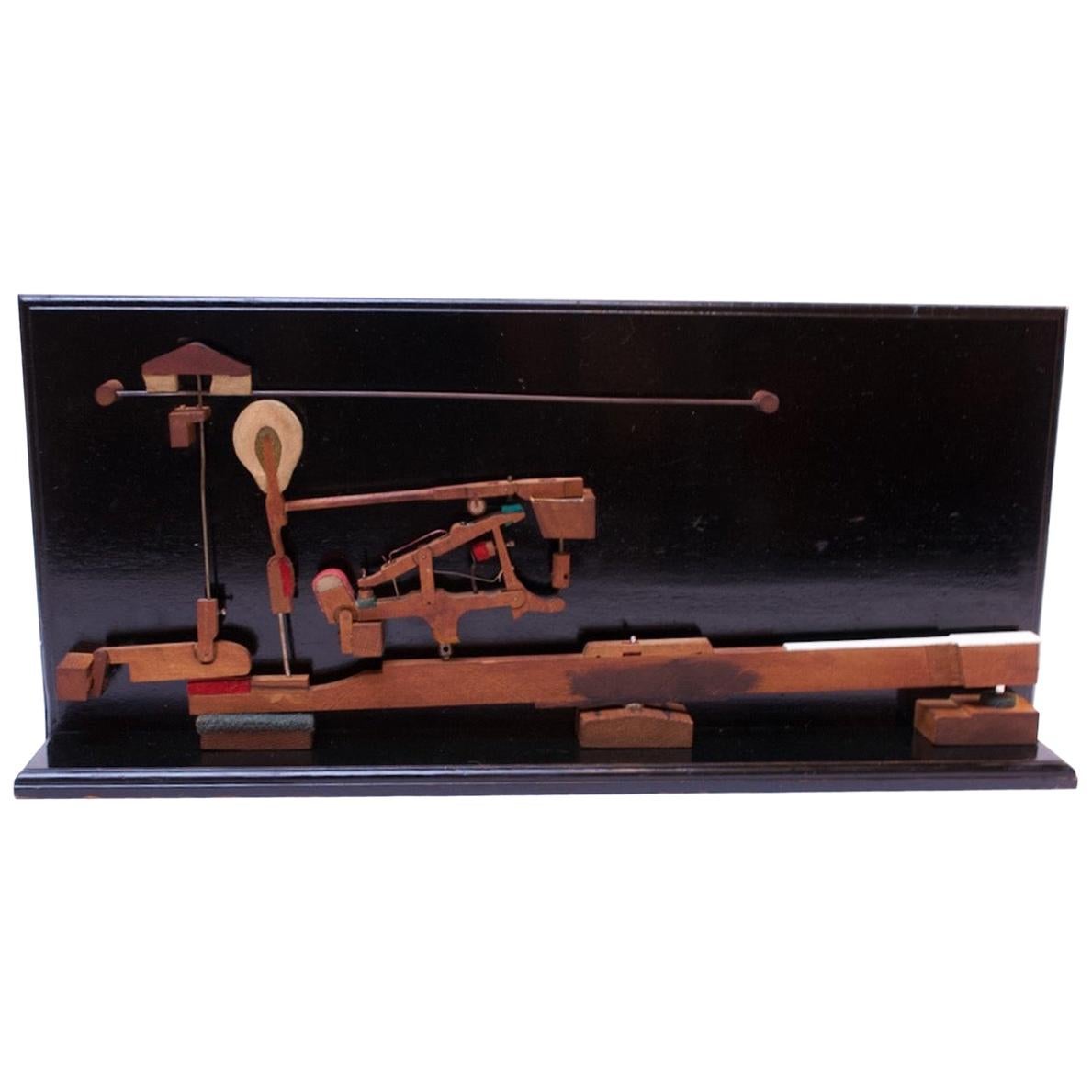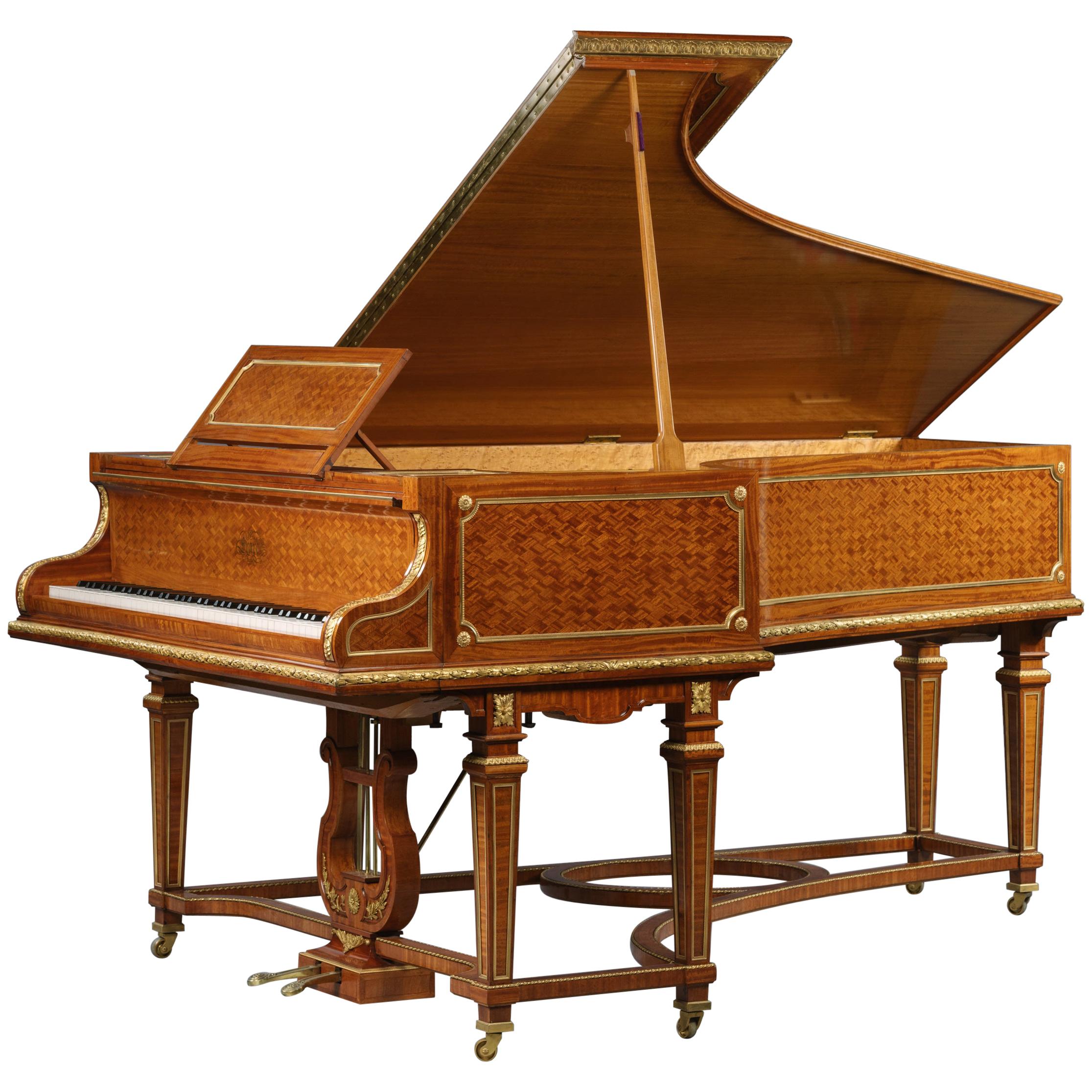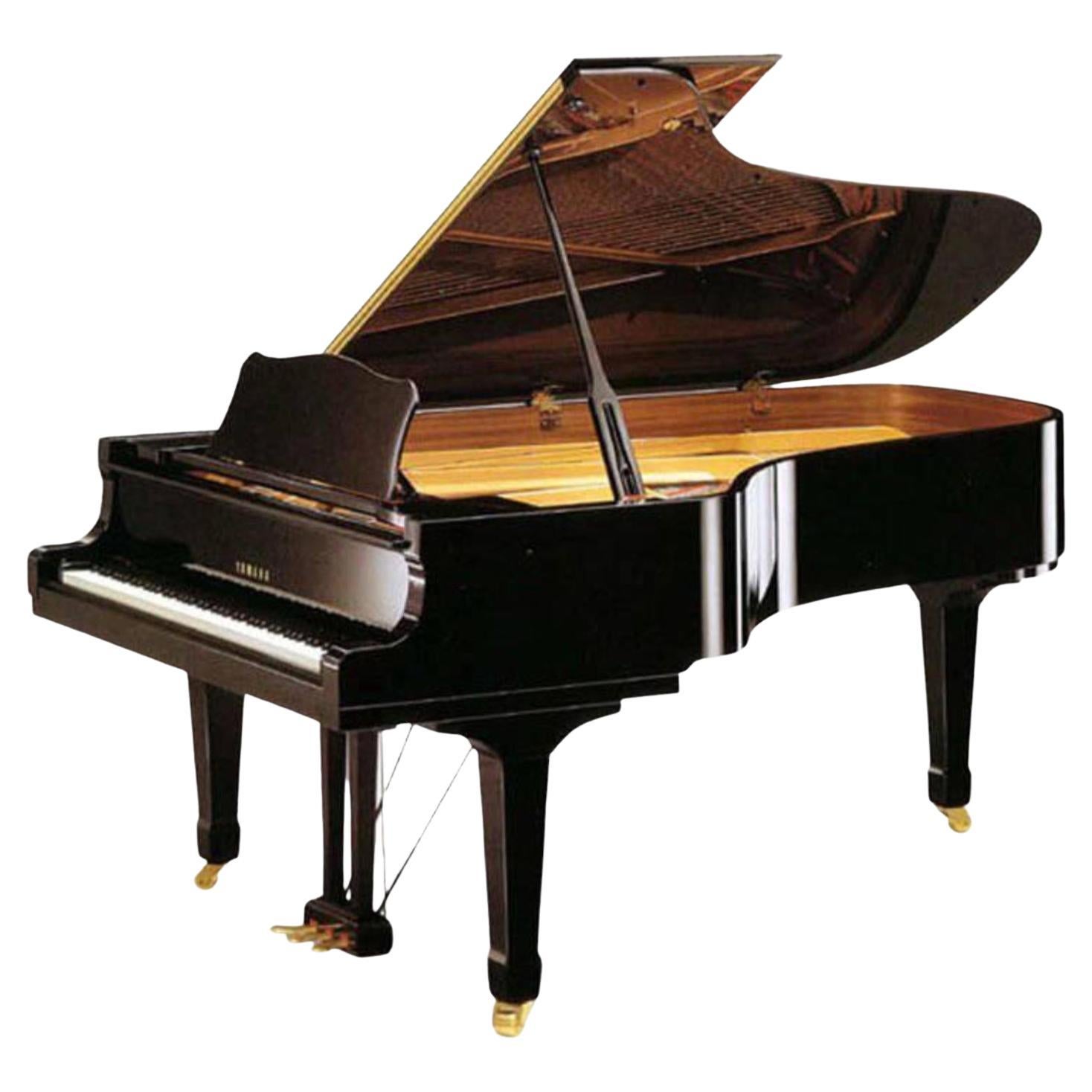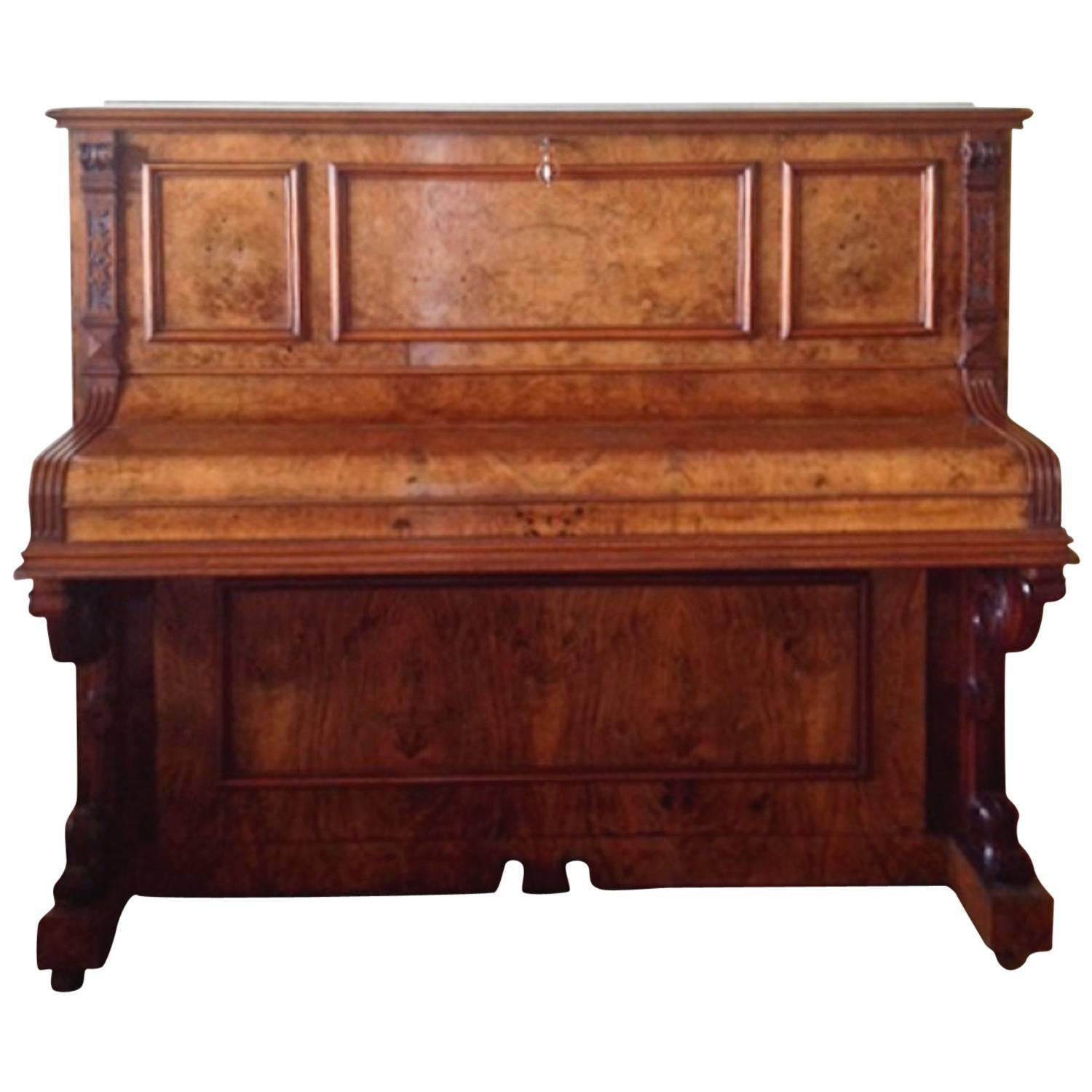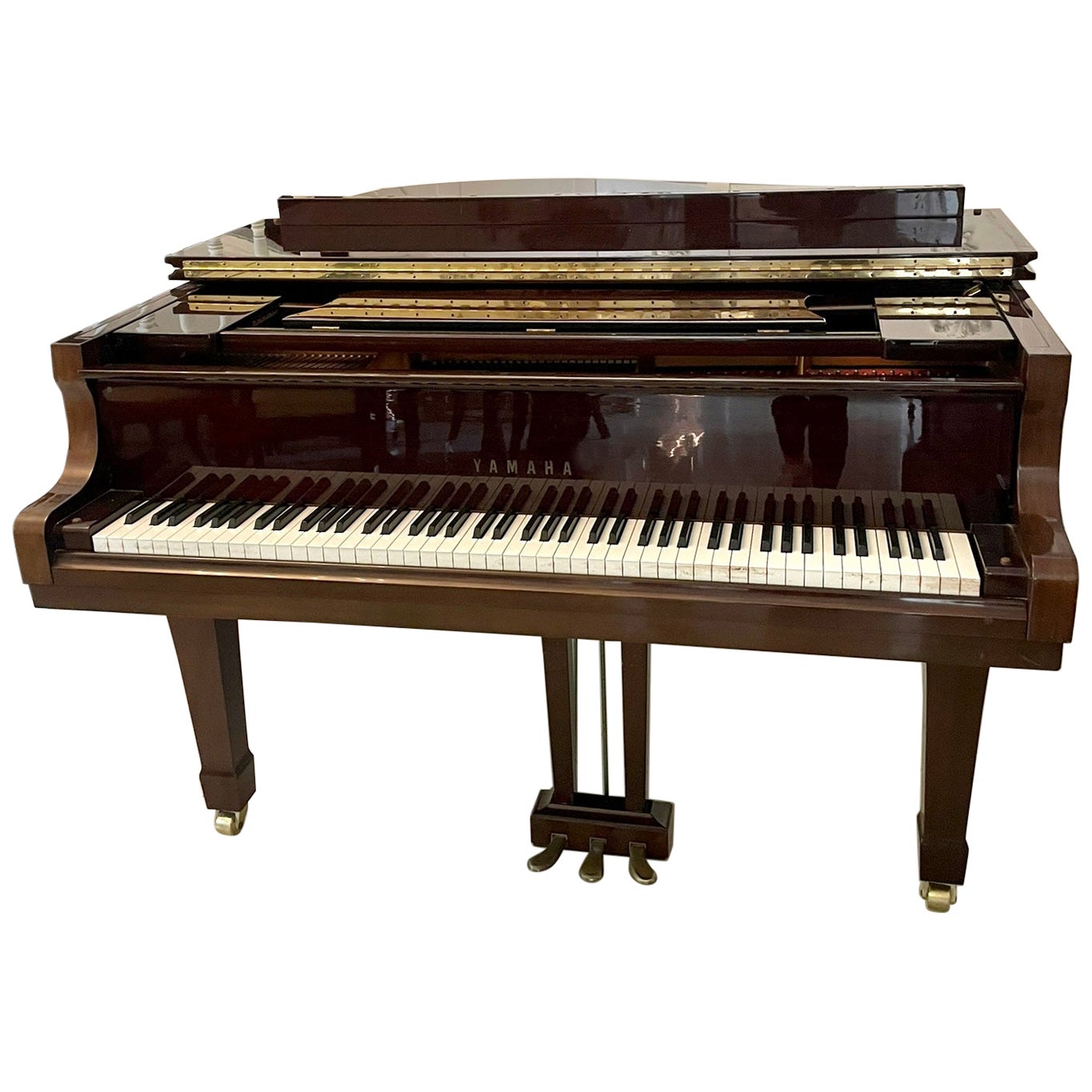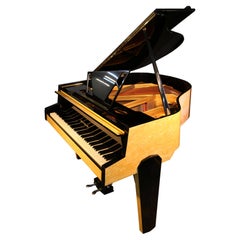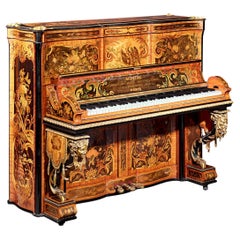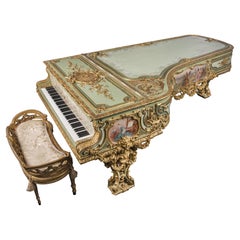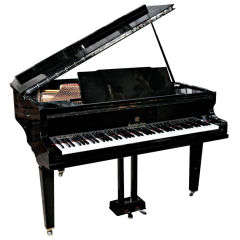
Piano
View Similar Items
1 of 10
Piano
About the Item
- Dimensions:Height: 37.8 in (96 cm)Width: 54.34 in (138 cm)Depth: 53.15 in (135 cm)
- Materials and Techniques:
- Place of Origin:
- Period:
- Date of Manufacture:UK
- Condition:Excellent and full restored.
- Seller Location:London, GB
- Reference Number:Seller: 38101stDibs: 120123892439
You May Also Like
- 1950's Style Zimmermann Baby Grand Piano Yellow Formica Tubular Steel Piano LyreLocated in Leeds, GBA 1950s style, Zimmermann baby grand piano with a contrasting black and yellow formica case. Piano features an asymmetrical music desk with geometric cut-ou...Category
Mid-20th Century German Musical Instruments
MaterialsSteel
- Claude Montal Exposition Universelle PianoLocated in New Orleans, LACrafted by renowned French artisan and author Claude Montal, this piano was presented at the famed Crystal Palace exhibition in London in 1851, where it ...Category
Antique 19th Century French Musical Instruments
MaterialsBronze
- Steinway & Sons Concert Grand PianoLocated in SAINT-OUEN-SUR-SEINE, FRThis extraordinary concert grand piano with 88 keys was made by the prestigious firm Steinway & Sons around 1894. The case's decoration was entrust...Category
Antique Late 19th Century French Louis XV Musical Instruments
MaterialsWood, Giltwood
$1,340,410 - Pierre-Paul Montagnac Modernist PianoBy Pierre-Paul MontagnacLocated in Philadelphia, PAFrench Modernist Art Deco piano and bench by Pierre-Paul Montagnac, a variant of the model used in one of the luxe apartments, the Caen, on the great French oceanliner Normandie in 1935. Created in rosewood and sycamore, and carefully and correctly restored, including the fine Erard (#127208) instrument. 56” wide x 60” deep. Documented in numerous sources, including the July 1935 issue of Art et Decoration. Pierre-Paul Montagnac (1883-1961) Born in Saint-Denis, France on 9 May 1883, Pierre-Paul Montagnac was equally talented as a fine artist and a decorative artist. He was educated in both disciplines, studying with Eugene Carriére as well as at the Académie de la Grande Chaumiére, both in Paris. His inaugural exhibition was at the 1912 Salons – and at the 1920 Salon d’Automne he received a traveling scholarship. In 1918 he began working in the firm of André Mare and from 1922 collaborated with Maurice Dufrene at La Maîtrise, the famous design studio of Galeries Lafayette. From 1921 he exhibited at the Salons of la Société des Artistes Décorateurs, Salon des Architectes Modernes, and internationally, in Barcelona and Leipzig. He designed suites on the grand French oceanliners, l’Atlantique, Normandie and Pasteur. At the 1925 Paris International Exposition his work was in a standout class. At the 1937 Exhibition he organized the pavillion of the Artistes Decorateurs and personally won a Grand Prix. For the New York Exhibition in 1938, he was a member of the international jury, organized the group of Decorators, and, as architect, organized the exhibitions of jewelry and perfumes. He became a member of the Society of Modern Architects and executed important and numerous architecture and decorating projects including the luxury apartments on the great French oceanliners l’Atlantique, Pasteur, and Normandie. Vice President and then President of the Societe des Artistes Decorateurs from 1930-1938, he was also President of the Salon d’Automne and Vice President of the Committee of the Exhibition of Arts and Embellishments of Life; member of the steering committee of C.T.I. and Artistic Property, member of the Board of Directors of the Central Union of Decorative Arts. He was also an Officer of the Legion of Honor and received the Cross of War. MONTAGNAC was the son of an engineer and he had a taste for geometry and science that predisposed him to the rigors of architectural laws. Multi-talented, he worked independently as a painter – who had paintings acquired by the French government – while also working in the related fields of architecture and decoration. His work included homes, apartments, galleries, luxury shops, banks and the aforesaid oceanliners. As a designer/decorater, Montagnac had the taste for quality, luxurious furniture, using precious woods, bronze extensions, ivory inlays, mother-of-pearl, metal and coral. He advocated for a resolutely modern style and, free of all pastiches, focused on beautiful cabinetry, the challenges of furniture design, particularly from 1940 to 1945, captured all his attention. The tireless activity of Montagnac, whose varied works are represented in official museums and residences, was also recognized from a professional and social point of view. He was a remarkable organizer, devoted to the cause of art, to the defense of the trade and his colleagues. It was Montagnac who, in 1939, with Anatole de Monzie, took the initiative to found the ENTRAIDE to Artists (which provides support to talented young French artists). MOBILIER ET DECORATION, September/October 1953 ERARD An illustrious piano manufacturer, Sebastien Erard began building superior harpsichords in Paris in the mid-1700s, produced pianos for the French Court, and received a multitude of patents, many of which are still in use in piano manufacturing. Erard pianos were marketed as the finest pianos in the world and were owned by Queen Victoria, Franz Liszt, Chopin, Verdi, Ravel, and Felix Mendelssohn among many others. They continued to enjoy international success well into the 20th century. They were known for their unique sound quality, similar to the American square grand piano...Category
Vintage 1930s French Art Deco Musical Instruments
MaterialsRosewood, Sycamore
- Louis XV Kingwood Grand PianoBy Carl BechsteinLocated in New York, NYFrench Louis XV-style ormolu mounted kingwood, tulipwood & parquetry grand piano (sgnd C.BECHSTEIN, numbered 20475 for the date 1888)Category
Antique 19th Century French Musical Instruments
MaterialsOrmolu, Brass
$185,000 - Pleyel Grand Piano, Paris 1870By PleyelLocated in Littleton, COThis Pleyel concert grand piano crafted in Paris in 1870 is a timeless masterpiece that embodies the elegance and craftsmanship of 19th-century French piano manufacturing. Pleyel instruments are renowned for their exceptional quality and rich musicality, representing the pinnacle of piano design in the Romantic era, and this piano – an early example of the technological innovation of cross-stringing that was burgeoning during the period – is one in a series of only six ever produced. This piano is in extraordinarily immaculate condition with nearly every original part, including the soundboard, pristine ivory keys, and the brass inlay in its beautifully figured walnut cabinet. Candle stands slide forward on either side of the collapsable music desk. This piano was first purchased by the French Count Charles Étienne Gustave Le Clerc, count of Juigné (1825-1900), one of the wealthiest landowners in Brittany and a member of the French National Assembly, later a member of the House of Representatives, and in late life, the Senate. The piano was restored in 1997 at Maison Erard by master restorationist Frits Janmaat in Amsterdam, and later conditioned by Edwin Beunk. In recent years, some of Europe's finest historically-informed musical artists played this Pleyel in PBS concert performances in collaboration with the late Sergiu Luca. Standing on substantial carved legs and brass wheels, the piano exudes a majestic presence through the graceful lines of its Second Empire style cabinet that embodies the period's aesthetics. The keyboard, meticulously crafted from ivory and ebony, is a testament to the attention to detail in every aspect. Its 85 keys...Category
Antique 17th Century French Romantic Musical Instruments
MaterialsWalnut
$125,000
Recently Viewed
View AllMore Ways To Browse
Piano Stool Wood
Vintage Baby Grand
English Bar Stools
Wood Grand Piano
Baby Piano
Vintage Stools Uk
Vintage Stool Uk
Piano Babies
Baby Grand Piano
Baby Grand Pianos Used
Ebonised Stool
Baby Grand Pianos
Baby Baby Grand Piano
Vintage Baby Grand Pianos
Vintage Instruments Uk
Wood Baby Grand Piano
Vintage Bar Stools Uk
Rosewood Piano

